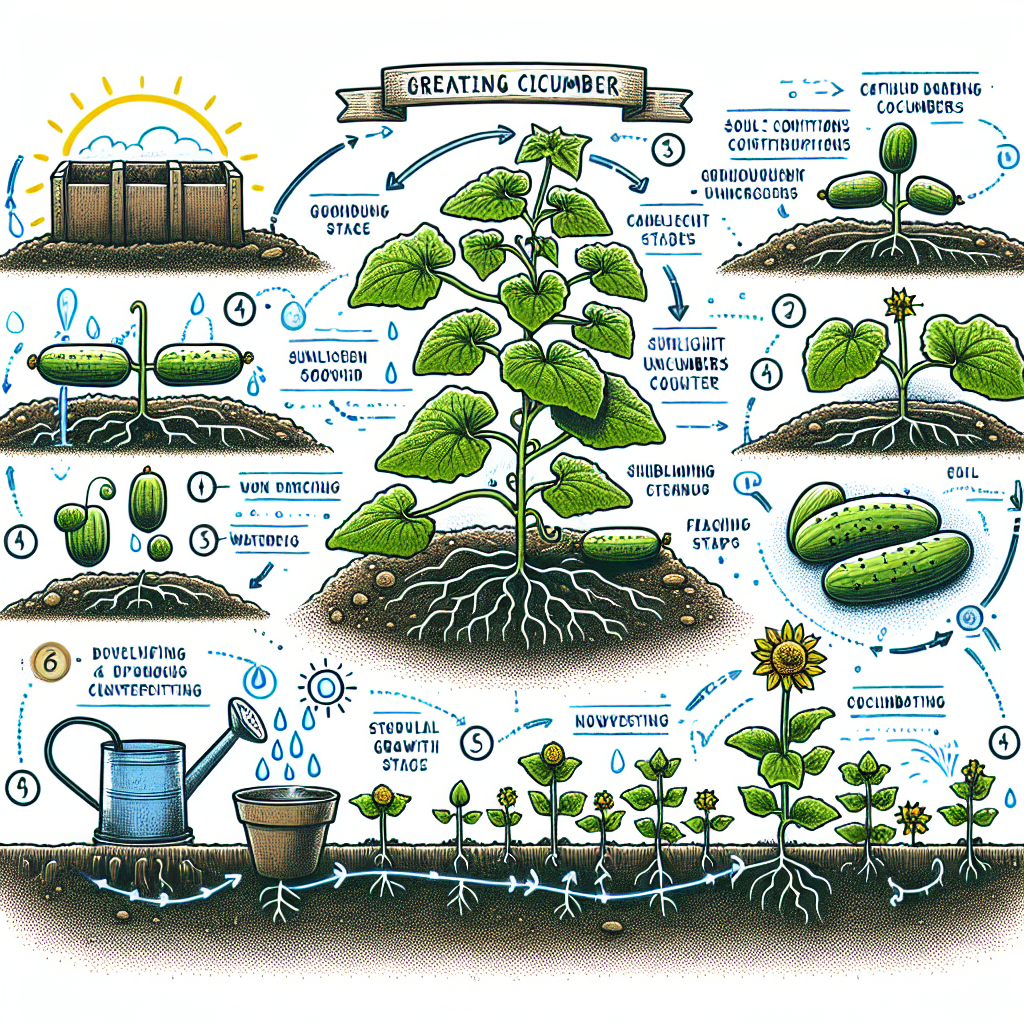
How to grow cukes
Your Ultimate Guide to Growing Cucumbers
Cucumbers, or “cukes” as they are affectionately called, are a refreshing addition to any garden. With their crisp texture and hydrating properties, they make a fantastic snack, salad ingredient, or garnish. If you're a novice gardener or someone looking to refine your skills, understanding how to grow cukes effectively is essential. This article will provide you with the necessary steps and tips to cultivate healthy and delicious cucumbers.
Understanding the Basics of Cucumber Growth
Before delving into the specifics of **growing cucumbers**, it’s crucial to comprehend what cucumbers need to thrive. Factors such as climate, soil type, and sunlight play significant roles in their growth. Here's a basic rundown:
- Climate: Cucumbers favor warm weather and are best suited to USDA Plant Hardiness Zones 4-11.
- Soil: They prefer well-draining soil rich in organic matter.
- Sunlight: Aim for a location that receives at least 6-8 hours of direct sunlight daily.
Selecting the Right Type of Cucumber
There are several varieties of cucumbers, and selecting the right one for your needs is pivotal. The most common types include:
- Pickling Cucumbers: Smaller and bumpier, ideal for making pickles.
- Slicing Cucumbers: Larger, smoother, and typically used fresh in salads.
- Seedless Cucumbers: Often skinless and crisp, perfect for snacks.
Preparation for Planting
Choosing the Right Location
Picking the right spot in your garden is immensely important. Consider the following when choosing a location:
- Drainage: Choose a site that drains well to prevent root rot.
- Proximity to a Water Source: Ensure it’s easy to water your plants as needed.
Soil Preparation
Having nutrient-rich soil can dramatically affect your cucumber yield. To prepare your soil:
- Test your soil pH; cucumbers thrive in a pH range of 6.0 to 6.8.
- Add compost or well-rotted manure to enhance nutrient content.
- Ensure the soil is loose and well-aerated for optimal root development.
Starting Seeds Indoors vs. Outdoors
You can start your cucumber seeds indoors or sow them directly outdoors. Each method has its benefits:
- Starting Indoors: Gives your plants a head start, especially in cooler climates.
- Sowing Outdoors: Simpler and less time-consuming; best in warm areas after the last frost.
How to Grow Cucumbers: The Planting Phase
When to Plant
The best time for planting cucumbers is after the danger of frost has passed, and the soil temperature is at least 70°F (21°C). Here’s a simple planting guide:
- Spring Planting: Ideal for most regions; typically between late April and June.
- Fall Planting: In warmer climates, consider a second planting in late summer for a fall harvest.
Planting Techniques
Whether you start indoors or outdoors, here are some effective techniques for planting:
- **Spacing**: If planting seedlings, space them about 18 to 36 inches apart, depending on the variety.
- **Depth**: Plant seeds 1 inch deep. If using seedlings, set them in the ground at the same depth they were in their pots.
- **Watering**: Water thoroughly immediately after planting to promote seed germination.
Cucumber Care: Watering and Fertilization
Watering Techniques
Water is a crucial component of cucumber care. Without proper hydration, your plants will not thrive.
- Frequency: Aim to water deeply once or twice a week, more frequently during dry spells.
- Method: Use a soaker hose or drip irrigation to water at the base of the plants, preventing leaf diseases.
Fertilization
Fertilizing is essential for healthy growth. Here’s how to do it correctly:
- Use a balanced fertilizer with equal parts nitrogen, phosphorus, and potassium.
- Apply the fertilizer when the plants start to vine, usually 2-4 weeks after planting.
- Reapply every 4-6 weeks during the growing season for optimal results.
Supporting Your Cucumber Plants
Providing Structure
Cucumbers can grow vines that require support for best results. Here’s how to provide adequate support:
- Trellis: Erecting a trellis helps cucumbers grow vertically, saving space and allowing better air circulation.
- Cages: Using tomato cages is an excellent alternative, especially for bush varieties.
Pruning Techniques
Pruning is also beneficial for enhancing air circulation and removing any diseased foliage. Here are some simple steps:
- Remove any dead or yellowing leaves at the base of the plant.
- Pinch off the tips of vines to encourage lateral growth.
Pest Management and Disease Prevention
Identifying Common Pests
Pests can threaten the health of your cucumber plants. Be on the lookout for:
- Spider Mites: Tiny insects that can cause yellowing leaves.
- Aphids: Small, green insects that cluster on leaves and stems.
- Cucumber Beetles: These can damage plants and transmit diseases.
Preventing Diseases
Disease prevention is equally important for maintaining healthy cucumbers. Here are some tips:
- Rotate your crops to prevent soil-borne diseases.
- Ensure a proper spacing between plants for airflow and reduced humidity.
- Use disease-resistant varieties whenever possible.
Harvesting Your Cucumbers
When to Harvest
Knowing when to harvest cucumbers is as important as how to grow them. Here are some signs to look for:
- When the cucumbers are firm, green, and shiny.
- For slicing cucumbers, harvest when they reach about 6-8 inches in length.
- For pickling varieties, harvest when they are smaller, around 4-6 inches long.
Harvesting Techniques
When it’s time to harvest, ensure you do it carefully:
- Use a pair of scissors or pruners to cut the cucumbers off the vine, avoiding damage to the plant.
- Handle the cucumbers gently to prevent bruising.
- Wash them under running water before storing or using them.
Conclusion
Growing cucumbers can be a rewarding and fun experience. By understanding the essential aspects of cultivating this versatile vegetable, you’ll be able to enjoy fresh cucumbers all summer long. Remember, consistency in care through proper watering, fertilization, pest management, and timely harvesting are key to success. Happy gardening!
By Guest, Published on August 8th, 2024